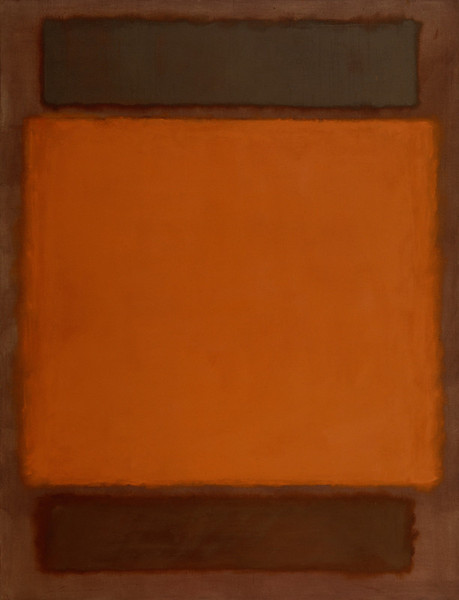Orange and Brown, 1963
Orange and Brown is a piece of abstract art created by Mark Rothko in 1963. It was a creation of oil on canvas with a size of 89 ½ x 70 inches. The painting is currently held at the Detroit Institute of Arts.
In the painting, Mark has made one big central square surrounded by two brown rectangles. All of them are placed on a background with a lighter brown colour. The idea was to create a masterpiece that showed dramatic emotions due to contrasting colours. The image is a simple as that; three colours are expertly combined to give some dramatic feel to the viewer's mind.
The artist took joy in creating colour arrangements using soft brushy borders around different colours at the edge of the canvas. However, he used straight lines on the primary colour to elicit some dramatic change in tone. This created different feelings in different viewers.
Style of Painting
Mark used the style of art called abstract art. Abstract art was a departure from traditional forms of art where artists used to show the reality by using slight/partial or complete representations of forms that readers could identify with. Instead, abstract painters played around with colours to create forms and shapes that could not be described as known objects but delivered some message or emotion. In Mark's case, his abstract art took the shape of geometric shapes, with rectangular and square dimensions. Still, readers cannot tell what the images mean or objects in the painting, except identifying the shapes.
Abstract art is part of modern art. It was formed in the early 1900s by artists looking to move away from stringent rules that formedtraditional art. Using abstract imagery, artists could explore the world of imagination and create pieces that were only visible in their minds.
Meaning of the Painting
This abstract painting was a depiction or expression of his philosophical ideas of love, peace, and unity. The strong feelings stemmed from his childhood, where he had faced discrimination as a Jew, after losing his father at a young age. He wanted to show people that the joy of seeing different colours and relating with them. This image is one of the few that explains that everyone is equal and beautiful despite their skin tone.
Inspiration for His Work
His work was inspired by various artists, among whom were Milton Avery, Adolph Gottlieb, and Barnett Newman. He was also influenced by Second World War artists such as Clyfford Still, Jackson Pollock, and Willem de Kooning. These painters either did deep colour field painting (just like Mark) or Action painting (forms and objects in various shapes and colours).

